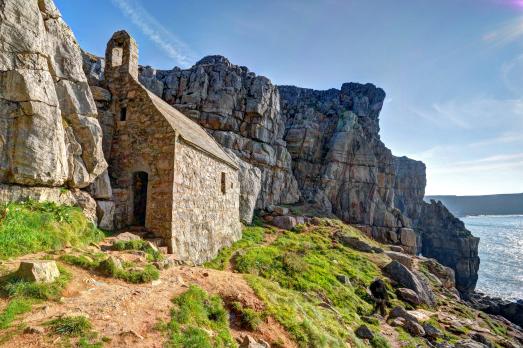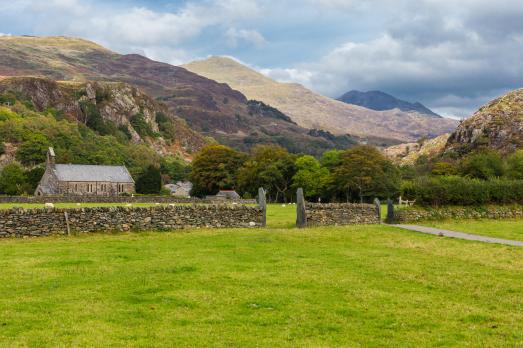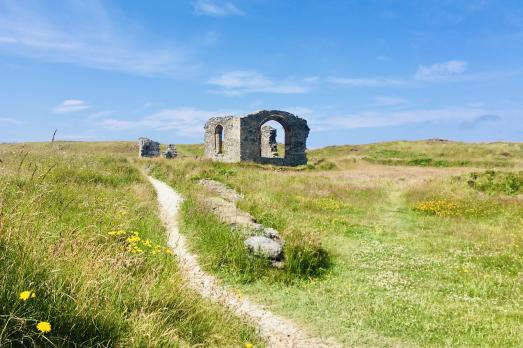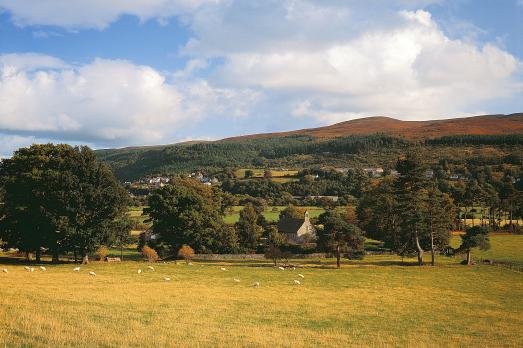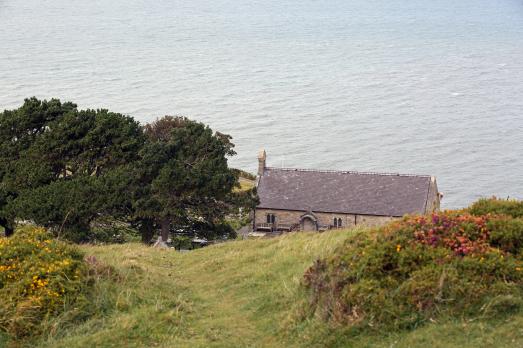
Tirweddau hudol
Ancient Welsh churches and their magical connection with the landscape
by Caroline Welch, former Church Support Officer for Wales/Cymru at the National Churches Trust
What is it about the wild and mysterious landscape of Wales; and the ancient churches you stumble across, every few miles, which seem so intimately connected with it?
Churches that time forgot; churches set in circular llan, protected by trees much older still. Churches that seem at one with the elements; the mountains, the seas, the valleys and the streams.
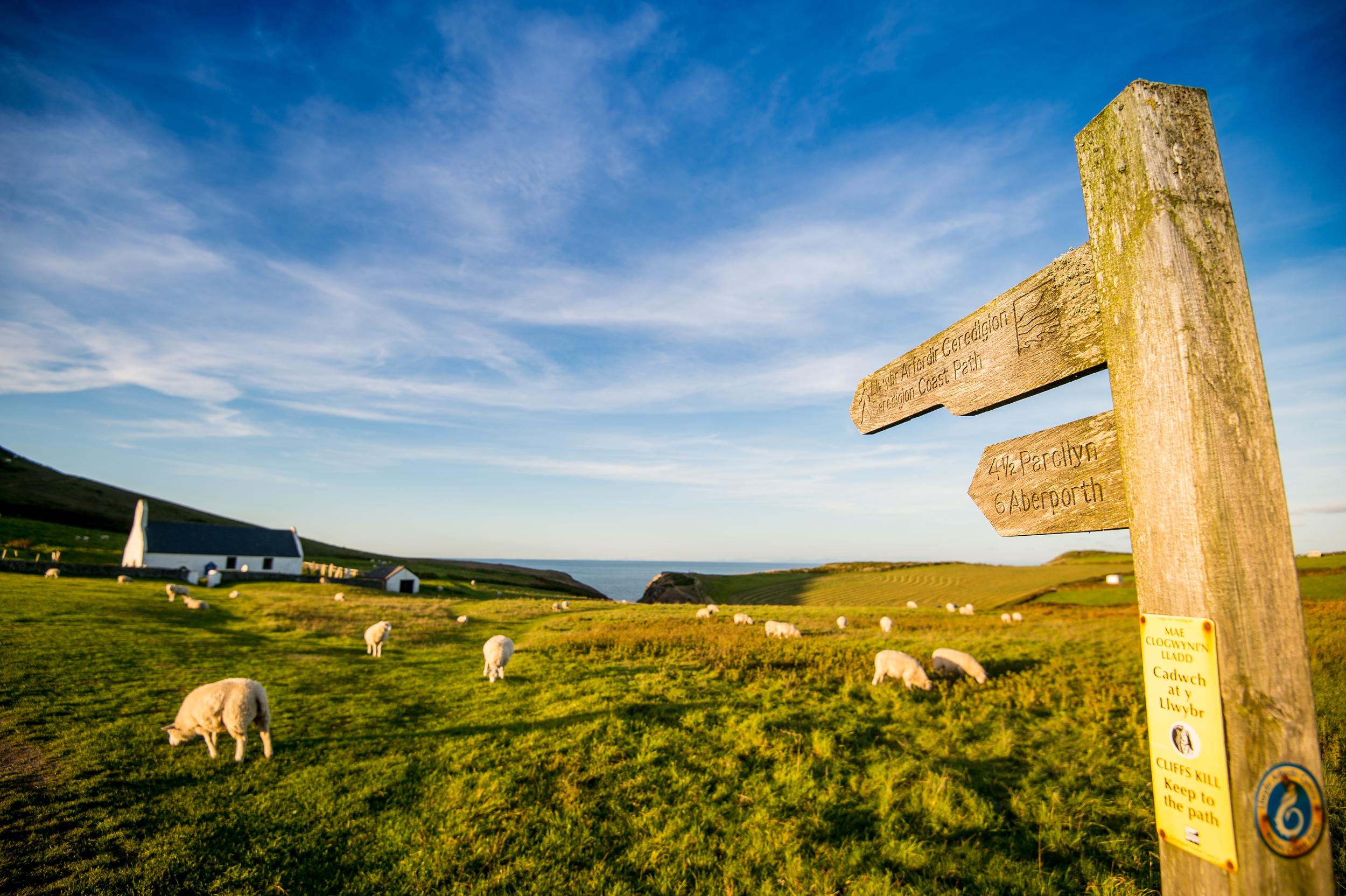
©CrownCopyright2020
The largest collection of medieval churches in the world, probably.
Wales is said to have the largest collection of medieval churches (that’s 500+ years old) anywhere in the world. There’s literally a church, often on a preChristian site, every few miles. There are thousands.
But why are they so often in the middle of nowhere?
And why is it, when you stumble across one, it feels like time has stopped, completely stood still, like you’ve entered a spiritual time warp? And then, when you sit on the ancient pews and backless benches, and close your eyes, you feel you can breathe in the same air of those who were here, hundreds of years before.
What is that other worldy feeling, that so many Welsh churches ignite within us when we explore them?

It’s in the atmosphere.
Maybe it’s the atmosphere; the musty smell, the cool temperature, the dark, the patina, the cold stone surfaces, mysterious carvings, tombs, gravestones and stained glass telling stories long forgotten. It’s certainly not in any grand architecture, like churches across the border.
These sacred places couldn’t be simpler. This is history laid bare, where the people met their God. Simple undressed stonework and lime plastered walls, tiny windows, rugged low roofs and squat towers, humble functional bellcotes.
And there’s something about the place
But there’s something too about the place. Something about this very place. You can’t quite put your finger on it. You couldn’t see the church until you were right on top of it, or it seems impossible a church could be sited here, so far from human existence, sheltered by the mountains, looking out to sea, almost impenetrable by road, accessible only by foot.
Or, how does it survive here; like St Govan’s Chapel at Bosherston, halfway up a cliff, or St Cwyfan Anglesey, an island church, reached only at low tide, or St Tanwg near Barmouth, sunk into the sand dunes just 20 metres from the high water mark? How did they come to be built precisely here?
These are places that ooze history; places that time, and the wealth to ‘improve’ them, forgot.
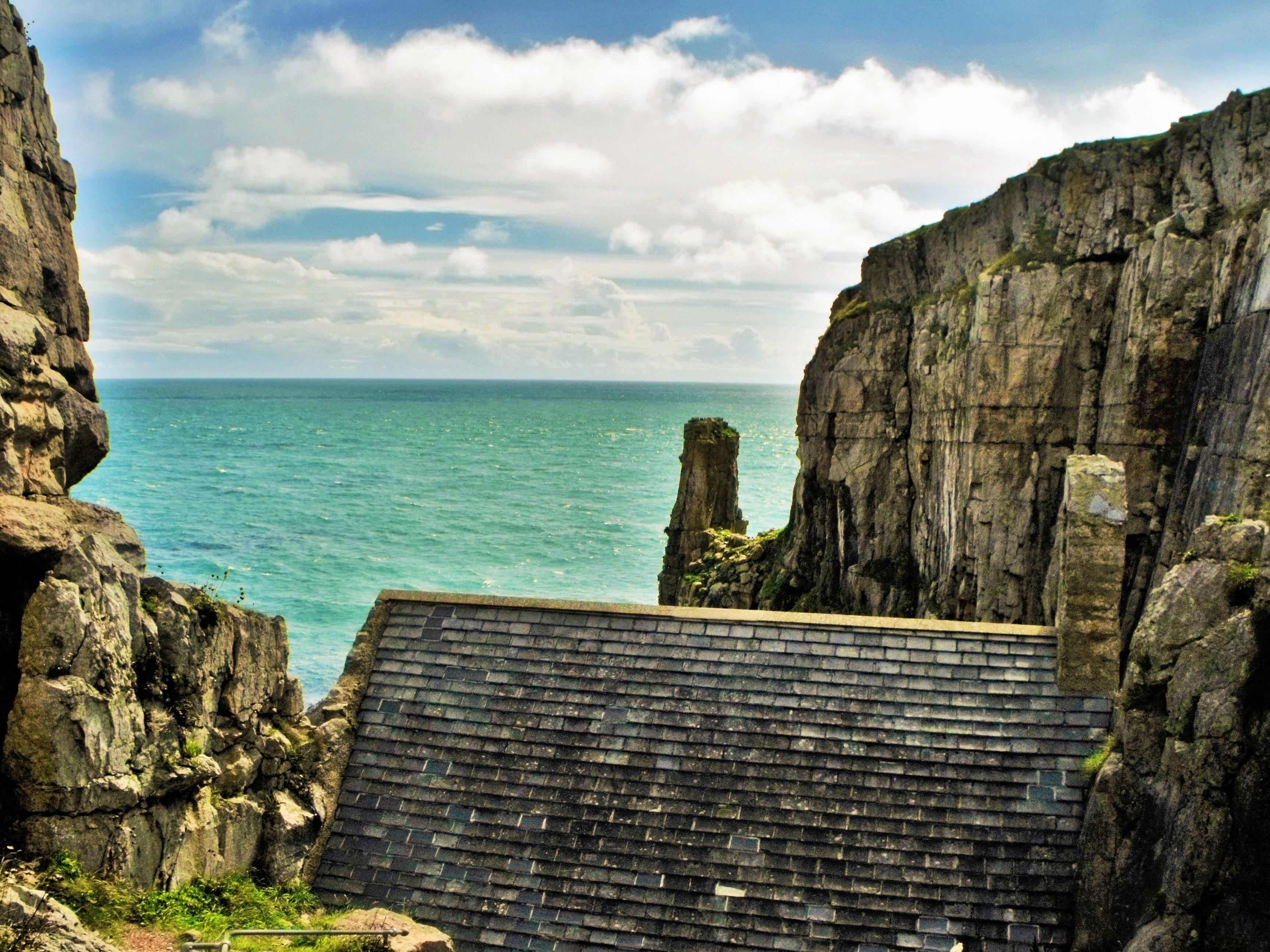
GrassrootsGroundswell
Signs of a nomadic people.
Churches in Wales are inextricably linked with the landscape. They are a product of the rural, nomadic existence of medieval Wales; of people travelling with the changing seasons, large swathes of land shaped by isolated farms scattered over the hills and valleys, with uninhabitable mountain and moor between. Travelling through all weathers to get to church, to meet and feel part of your community, making a pilgrimage, embodied church going here, it was part of the deal.
Some churches, like 7th century St Melangell Pennant Melangell in Powys, hidden deep in the Berwyn mountains, still have two gates on either side; one for those coming over the moor, and the other for those from the valley beneath. Set in a circular churchyard, it also happens to house the earliest surviving Romanesque shrine in northern Europe and is a place of pilgrimage for wildlife lovers. St Melangell is the patron saint of hares: she saved one being hunted by the Prince of Powys and was granted the living of the valley thereafter.
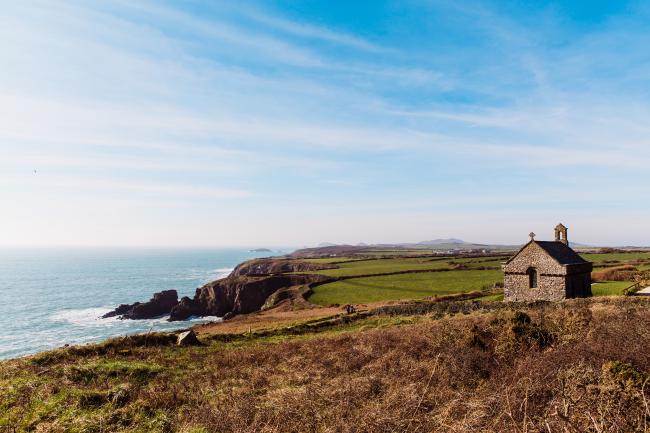
Sacred places chosen by Celts.
Lovers of nature and the wild are drawn to churches for many reasons, and Pennant Melangell also holds accolades for its 2,000 year old yews; Wales itself has the oldest collection of yews in the UK. Here they circle the church in a cwtch. That protective hug you get from the trees, the hedges, the wide, round churchyard, the ancient stone wall, is integral to how we feel when we visit these places, as any garden designer will tell you. Sometimes the circles loop wider, the church is encircled by hills, mountains, standing stones, on an inland island or out at sea. Or, as at Homy Martyrs, Mathry in Pembrokeshire, sited spectacularly like a castle in the centre of the village, the meeting point of no less than 5 roads. These are sites chosen precisely for the beauty of their connection with the landscape, the feeling that that spot is special, beautiful, inspired. But chosen, by whom?
In the introduction to his book Wales One Hundred Best Churches (the inspiration for much of this article) TJ Hughes writes:
‘Again and again the traveller to ancient Welsh churches has a shock of wonder at the majesty and beauty of the chosen location. They can only be fully understood as the exacting choices of Celtic holy men and women, seeking out sites to praise and reflect the God of creation. They belonged to a culture which through the long preChristian centuries had felt the sacred in the rocks, the trees, the water, which knew that at particular locations the world of the spirit intensified, which recognised holiness at points in the landscape with a powerful sense of place.’
It’s all in the view.
The Celtic people sought out sites that embodied their special connection with the natural landscape, but also from a point of practicality; where streams and springs emerged, and sometimes, but not always, shelter from the oh so powerful Welsh wind. As with ancient stone circles, they aligned their altars facing east, with the sun, and other holy sites.
The ruined church of St Dwynwen at Llanddwyn is sited precisely at the point on the promontory where Holy Island appears in view; and worshippers at the ancient sites of St Beuno Clynnog Fawr (where you start your pilgrimage to Bardsey) and at St Baglan Llanfaglan had a great view right back to Llanddwyn. Churches in Mid Wales appear to align with the Brecon Beacons peaks, as at St Sannan Bedwellte south of Merthyr, or Llandeilo Graham (St Teilo of the corn marigold), some 25 miles north.
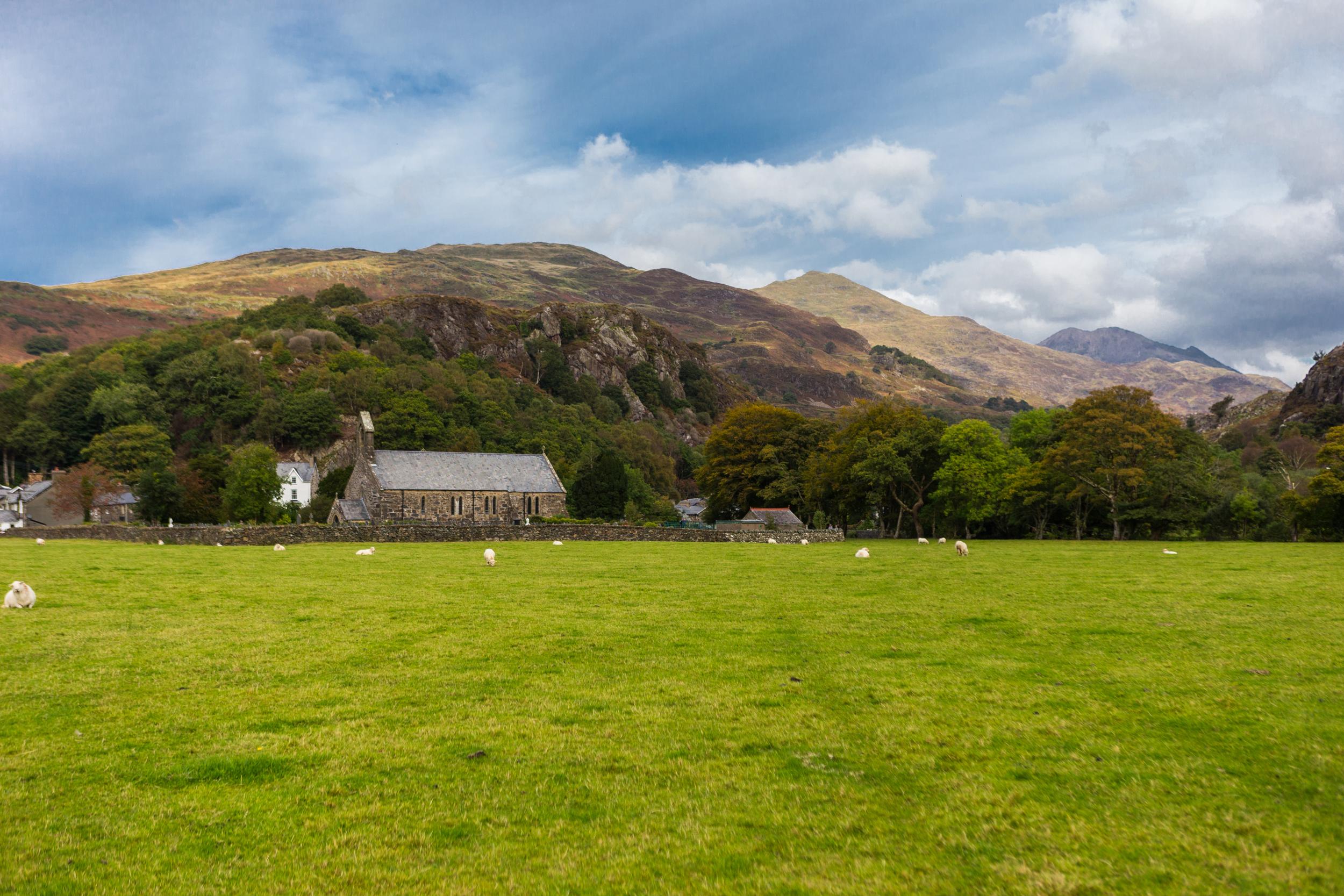
©CrownCopyright2020
Heaven on earth.
Poets have long found the landscape of Wales a place of divine sanctuary.
From RS Thomas on the moors, where ‘the air crumbled / and broke on me generously as bread’, to Dylan Thomas’s Fern Hill, where ‘the sabbath rang slowly, in the pebbles of the holy streams’.
In Wales there is no need for soaring spires and gothic arches to lead the eye up to heaven; there is no high architecture, the churches just belong to the landscape. St Brynach convened with angels on Mynydd Carningli (summit of the angels) and even the children feel it.
Historian Anne Eastham of the Saints & Stones pilgrims trails tells of the time she took a large class of chattering schoolchildren to medieval St Justinian, Llanistinan:
‘For the first half a mile along the lake they were noisy as can be, but as we crossed the grassy bridge into the vast Bronze age churchyard they became subdued. I pointed out the rambling roses growing there, the only remnant of the medieval village long gone. They were thoughtful. One child noticed the name of her family farm on a gravestone; as one they connected with the history of the place, fell silent, pondering their past and their future. And when I opened the ancient church door they filed in, without a murmur, and sat, unasked, in the pews; quiet and contemplative. Even at the tender age of 8, they felt the special atmosphere of the place, although they had no words to convey it.’
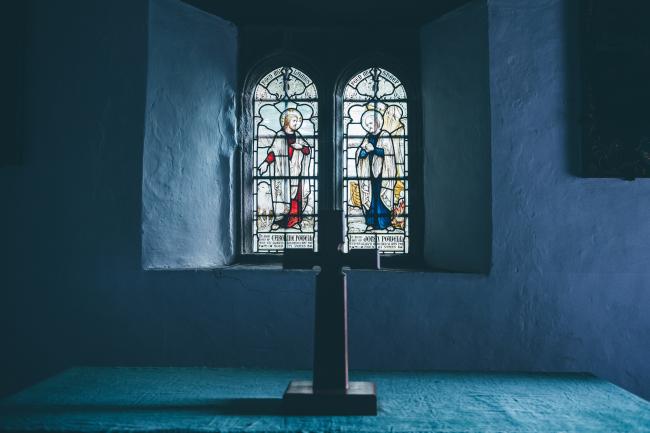
Constant and timeless
There’s something about these simple ancient spaces that resonates particularly strongly at the moment; special places that speak to us in times of difficulty.
Perhaps it’s the recognition that they’ve been here for centuries, millennia. And they’re still here now. While people come and go; birth, marriage, death; the church in the landscape lives on.
And when you visit, you can find a little bit of heaven, right here on earth, in the sacred landscape of Wales.
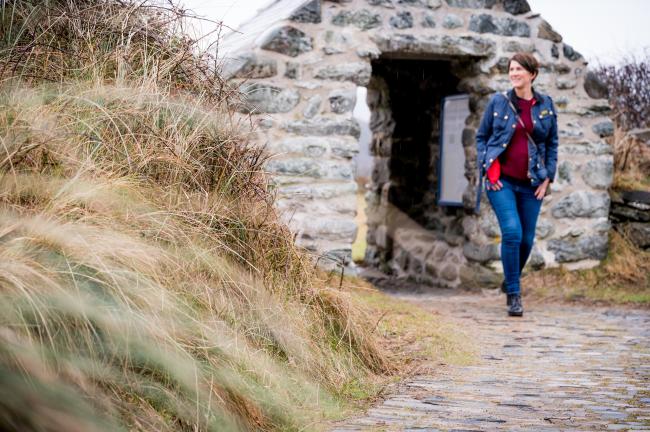
Tirweddau hudol


